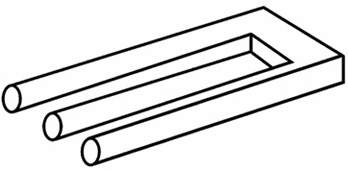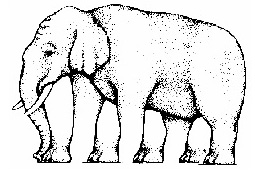Paradox Illusions
Paradox illusions are generated by objects that are paradoxical or impossible in "real life" or three dimensions, but look oddly convincing and perplexing in two dimensional drawings. Such illusions are often dependent on a cognitive misunderstanding that adjacent edges must join.
Lionel Penrose and his son Roger Penrose created several such classic impossible objects as the Penrose Triangle and the Penrose Stairs. The Penrose stairs is a two-dimensional depiction of a staircase in which the stairs make four 90-degree turns as they ascend or descend yet form a continuous loop, so that a person could climb them forever and never get any higher. This is clearly impossible in three dimensions; the two-dimensional figure achieves this paradox by distorting perspective. The best known example of Penrose stairs appears in the lithograph Ascending and Descending by M. C. Escher, where it is incorporated into a monastery where monks do penance by ascending continuously, but are allowed to turn around and descend occasionally.

The blivet is another undecipherable figure, an optical illusion and an impossible object. It appears to have three cylindrical prongs at one end which then mysteriously transform into two rectangular prongs at the other end. This blivet is reminiscent of an M.C. Escher print-it portrays two irreconciliable perspectives at once, creating a 'lost' layer between the top two rods, and an impossible extra, vanishing rod in between the bottom two. The multi-legged elephant shown below is another variation on this type of impossible, irreconcilable object.

